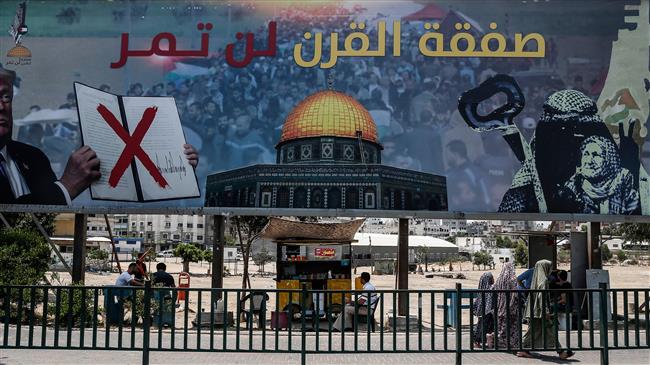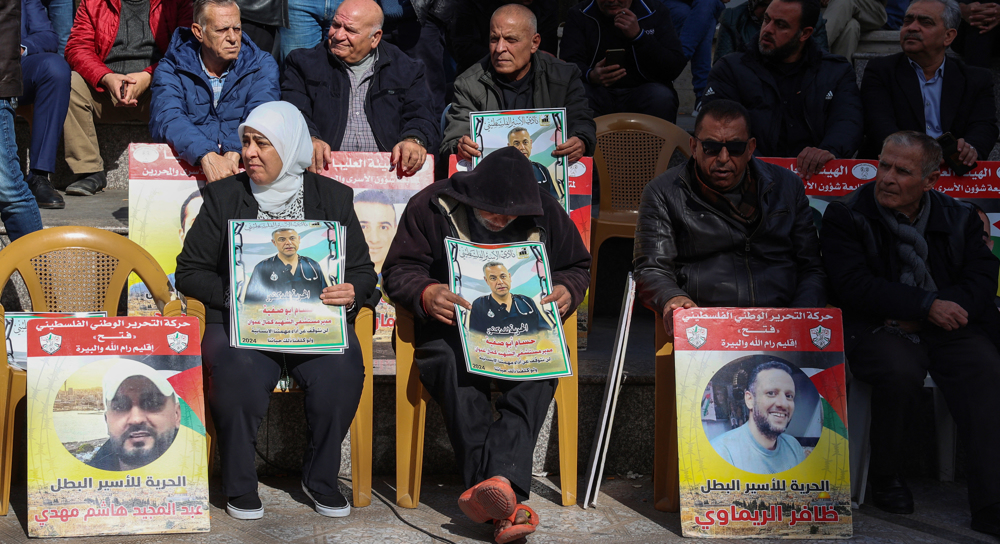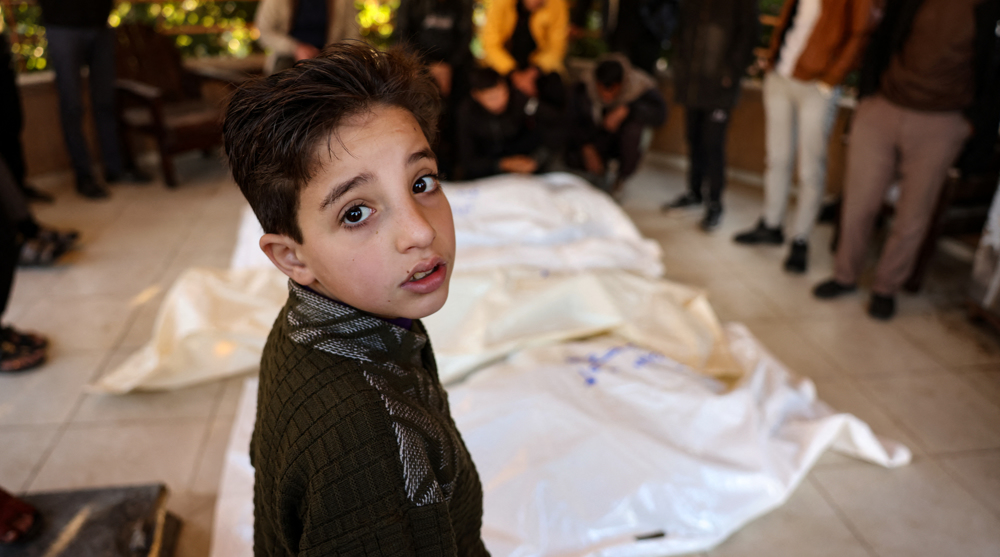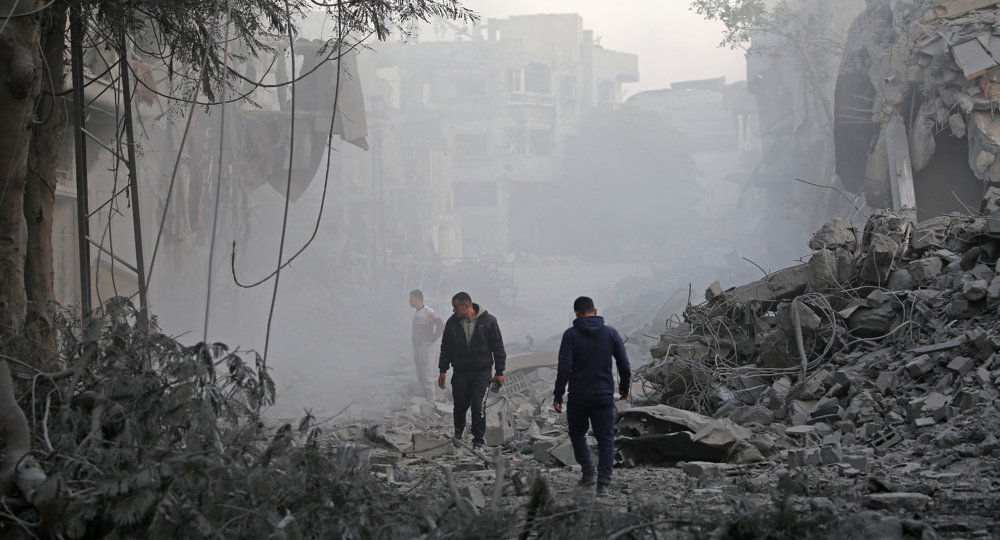Reported Draft of US deal: New Palestine, shared al-Quds, Saudi control of al-Aqsa
A Lebanese TV network has published what it reported to be a draft of US President Donald Trump’s controversial deal on the Israeli-Palestinian conflict, which envisages the establishment of a “new Palestine,” with occupied Jerusalem al-Quds remaining under mostly Israeli control and Saudi Arabia replacing Jordan as the custodian of the al-Aqsa Mosque.
According to Al-Mayadeen’s report on Monday, Trump’s so-called peace plan — which he calls the “deal of the century” — would see a trilateral agreement signed between Israel, the Palestine Liberation Organization (PLO) and the Gaza-based Hamas resistance movement.
New Palestine
Under the deal, a “new Palestinian state” would be established in the West Bank and the Gaza Strip, excluding the Israeli settlement blocs that would remain part of the occupied territories.
Shared Jerusalem al-Quds
Additionally, Jerusalem al-Quds — whose eastern sector was occupied by Israel during the Six-Day War in 1967 and illegally annexed — would not be split but would rather be “shared” between Israel and the Palestinian state, with the Arab population of the city becoming residents of Palestine.
The Jerusalem al-Quds municipality would become responsible for the entire city, while the Palestinian state would be responsible for education and would pay the Israeli municipality taxes and utilities.
Jews would not be allowed to purchase Arab homes and vice versa, while no additional areas would be annexed to Jerusalem al-Quds and the city’s holy sites would preserve their status quo.
Al-Aqsa custodianship shifts to Riyadh
Meanwhile, the al-Aqsa Mosque, which is currently administered by the Waqf — an arm of the Jordanian Ministry of Sacred Properties — will be placed under Saudi Arabia’s control.
Egypt gives territory to new Palestine
Regarding the Gaza Strip, the draft deal stipulates that Egypt would grant land to the new Palestinian state to be used for industrial, agricultural and commercial purposes as well as the building of an airport. However, Palestinians would not be allowed to live in the lands provided by Egypt.
Moreover, a highway and a pipeline for treated water would be built between Gaza and the West Bank.
$30bn funding
The wealthy Persian Gulf Arab states, the United States and the European Union would economically sponsor the Washington-crafted deal, providing 70, 20, and 10 percent of the funds, respectively.
“An amount of $30 billion will be allocated over a period of 5 years for projects related to the new Palestinian state,” the purported draft deal said.
The contributions by the Persian Gulf countries would be split proportionate to their oil production capacity.
Palestinians pay for protection
Furthermore, an agreement would be signed between Israel and the new Palestinian state, with the Tel Aviv regime providing protection to Palestine from “external aggression,” while Palestinians pay for it.
The amount the Palestinians will have to pay for protection would be negotiated between the Arab nations and Israel.
Timetable for ‘disarming’ Hamas, building Palestinian airport
Upon the signing of the so-called peace plan, Hamas would hand over its weapons to Egypt and its members would receive monthly salaries from Arab nations.
Gaza's sea borders and land crossings with Israel and Egypt would be opened to international trade.
A year after the agreement is implemented, elections would be held in Palestine.
All Palestinian prisoners would be gradually released from Israeli jails over a period of three years.
Within five years, a seaport and an airport would be constructed for the Palestinian state. Until that time, Palestinians would use Israeli ports.
Palestine's borders would be open to the passage of civilians and goods.
A Chinese company would build a highway that rises 30 meters above the ground connecting Gaza to the West Bank.
The Jordan Valley would remain under Israeli control. Highway 90 would be expanded to link the Palestinian state with Jordan.
Penalties for objection
If Israel rejects the deal, the US will end economic support for the regime.
If Hamas and the PLO oppose the agreement, Washington will end all financial support it provides to Palestinians and prevent funding provided by other countries.
If the PLO accepts the plan and Hamas or the Islamic Jihad dismiss it, then the two groups would bear the responsibility of their decision.
In any military confrontation between Israel and Hamas, the US will support Israel.
That US plan on the Israeli-Palestinian conflict — which is widely reported to be biased towards the Tel Aviv regime — has already been unanimously rejected by all Palestinian factions.
The US unveiled the economic portion of its initiative during a conference in Bahrain in June despite a Palestinian boycott.
Palestinians stopped recognizing the US as a mediator in the conflict with the Tel Aviv regime in 2017, after Trump recognized occupied Jerusalem al-Quds as Israel’s “capital” in defiance of international law.
VIDEO | Palestine solidarity demo held in London despite govt. attempt to stop it
Israel reserves ‘right’ to resume war: Netanyahu
Iran hails Palestinians ‘unmatched victory,’ their forcing Israel to surrender
VIDEO | Unceasing Israeli genocide
Iran’s exports to Afghanistan up 84% in 2024: Embassy
VIDEO | Gaza agreement and the disputes between Katz and Halevi
VIDEO | Press TV's news headlines
Israel to release over 1,890 Palestinians in first phase of Gaza truce: Egypt

















 This makes it easy to access the Press TV website
This makes it easy to access the Press TV website